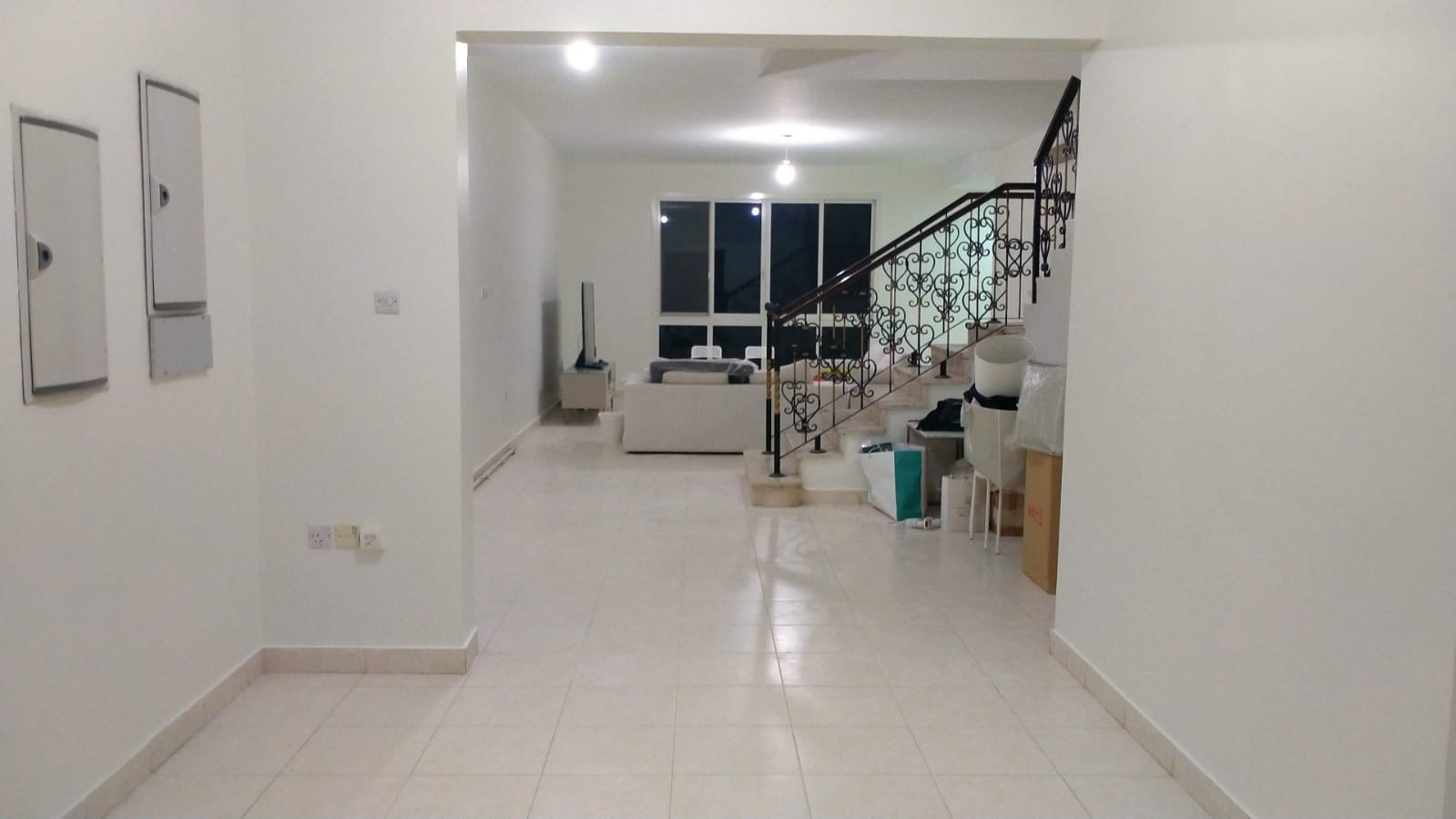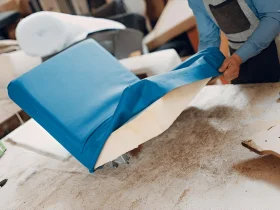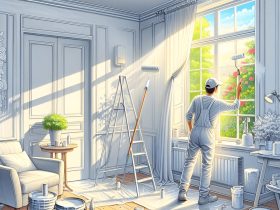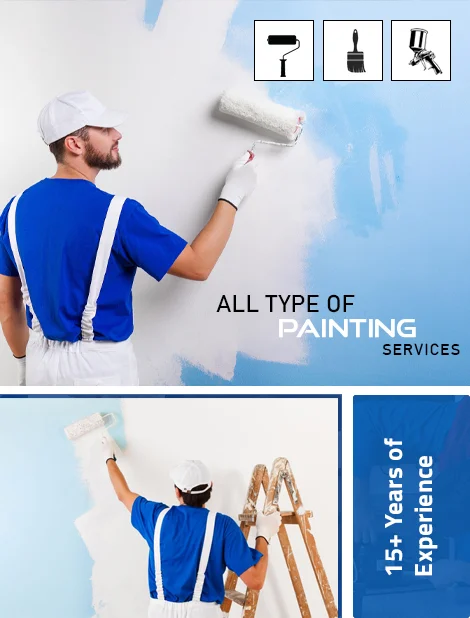For thousands of years, wall painting—one of the first forms of art—transformational color and creative space. From the first cave paintings to contemporary street art, wall painting has changed dramatically to mirror developments in artistic expression, technology, and society. Emphasizing its continuing significance and importance, this page explores the history, methods, and contemporary trends in wall painting.
A Historical Viewpoint on Wall Painting: Origins
Dubai wall painting techniques have its roots in prehistoric times. Among the first known instances are the cave paintings of Lascaux in France and Altamira in Spain, which date back roughly 17,000 years. Made with natural colors including ochre and charcoal, these ancient artworks include animals, human beings, and abstract symbols. These paintings most certainly had ceremonial or communication functions, highlighting the early human need to use art to record and explain their environment.
Ancient Civilizations
Wall painting developed in complexity and frequency as civilizations grew. Wall murals covering tombs in ancient Egypt portrayed themes of daily life, religious rites, and the afterlife, together with elements of Made with mineral-based paints, these artworks have stayed brilliantly across millennia. These artworks’ painstaking attention to detail and symbolic substance mirror the beliefs and social mores of Egypt.
Wall painting also grew rather popular in ancient Greece and Rome. Greek painters refined the fresco technique by layering pigments over moist plaster to produce robust, vivid images. Particularly those discovered in Pompeii, Roman wall paintings expose a passion with realism and perspective, showing legendary events, landscapes, and daily life. These pieces with their rich colors and complex designs were meant to improve both public and private environments.
The Enlightenment
With some of the most famous frescoes and murals in history created by Michelangelo, Leonardo da Vinci, and Raphael, the Renaissance signaled a golden period for wall painting. Two masterpieces of Renaissance wall painting are Michelangelo’s Sistine Chapel ceiling and Raphael’s School of Athens. Combining religious themes with humanistic ideas, these enormous pieces highlighted the painters’ technical mastery and creative vision.
Contemporary and Modern Achievements
Affected by several artistic trends like Abstract Expressionism, Surrealism, and Pop Art, the 20th century brought forth notable changes in wall painting. Large-scale murals by muralists such as Diego Rivera, José Clemente Orozco, and David Siqueiros addressed political and social concerns, hence turning public walls into potent visual narratives. Using urban settings as their canvas to challenge ideas and conversation on modern issues, contemporary street artists like Banksy, Shepard Fairey, and JR have further transformed wall painting.
Wall Painting Methods and Styles:
Wall painting covers a broad spectrum of techniques with special qualities and difficulties for each. The most notable methods are listed here:
Fresco
Derived from the Italian word “fresh,” fresco painting is placing pigment on newly laid lime plaster. Applied extensively during the Renaissance, this method produces a chemical link between the pigment and plaster, therefore producing long-lasting, durable paintings. Since the artist must finish each part before the plaster sets, fresco calls for exact preparation and quick execution. Among the notable frescoes are those by Michelangelo and Raphael as well as Giotto’s Scrovegni Chapel in Padua.
Painting on dry plaster with colors blended in a binding liquid such egg tempera or oil, secco—that is, Italian for “dry—is Since painters may work on smaller portions free from the time restrictions of wet plaster, this method enables more detail and freedom. Still, secco paintings are more prone to degradation over time and less robust than frescoes.
Large-scale paintings produced straight on walls or ceilings using acrylics, oils, and spray paint are known as mural murals. Modern murals let artists investigate new textures and effects by including mixed media and experimental techniques. Serving both decorative and communicative goals, murals abound in public areas, homes, and businesses.
Trompe L’oeil
French meaning “deceive the eye, Trompe l’oeil is a technique that produces optical illusions so rendering two-dimensional images three-dimensional. To replicate architectural components, objects, and settings, artists apply painstaking attention to detail, perspective, and shading, so giving the artwork life and reality. From ancient times, this method has been applied to improve the visual attractiveness of exteriors as well as inside spaces.
Street art and graffiti
Rising from urban subcultures, street art and graffiti have become accepted as valid artistic medium. Often using spray paint, stencils, and unusual equipment, these techniques produce vivid and provocative artwork on public walls and buildings. Particularly street art has become a worldwide phenomenon as artists like Banksy, Shepard Fairey, and JR use it to question conventional ideas of art, beautify metropolitan areas, and highlight social and political concerns.
Wall Painting: Personal Space Effects
Wall painting lets people express their own ideas and personalize their homes. Custom murals and ornamental paintings offer warmth, color, and character to change homes. Wall painting gives any house a distinctive and personal touch whether it’s in the child’s bedroom with amusing characters, a classy dining room with a classic scene, or a living room with abstract designs.
Public Art and Collective Involvement
Wall painting is absolutely important for community involvement and urban renewal in public areas. Often featuring local artists and people, public art projects turn abandoned spaces into energetic cultural icons. These initiatives encourage social cohesiveness, pride and identification, and draw tourist and economic development. Cities like Rio de Janeiro with its Favela Painting project and Philadelphia with its well-known Mural Arts Program show how wall painting could improve a community.
Dubai’s political and social criticism office painting services are a powerful tool for this purpose. Public walls allow artists to highlight urgent concerns including cultural identity, social injustice, and climate change, therefore encouraging activity and starting discussions. Powerful political statements found in murals by artists such as Diego Rivera and José Clemente Orozco still inspire new muralists addressing current issues.
Particularly street art has evolved as a forum for protest and voice from underprivileged backgrounds. Street artists’ anonymity and accessibility let them challenge power systems, call for change, and take back public areas. Works like Shepard Fairey’s famous “Hope” poster and Banksy’s politically charged murals show how greatly wall painting influences public opinion.
Current Uses for Wall Painting
Wall painting keeps changing in the modern art scene by adopting fresh technologies, subjects, and approaches. From private gallery shows to massive public projects, wall painting spans a broad spectrum of creative techniques and approaches.
Public Projects and Art for Communities
Wall painting is become a very effective instrument for urban rejuvenation and community involvement. Usually engaging local artists and citizens, public art projects turn abandoned areas into energetic cultural icons. These initiatives encourage social cohesiveness, pride and identification, and draw tourist and economic development. Cities like Rio de Janeiro with its Favela Painting project and Philadelphia with its well-known Mural Arts Program show how wall painting could improve a community.
Innovation and Technology
Technological developments have created fresh opportunities for wall painting. Murals are progressively including digital projections, interactive components, and augmented reality (AR) to provide spectators with immersive and dynamic experiences. Artists pushing the envelope of conventional wall painting like Refik Anadol and teamLab mix physical and digital worlds with modern technologies.
AR murals, for instance, expose secret layers, animations, and stories that let visitors interact with the artwork via their cellphones. This mix of technology and art not only improves the visual appeal but also involves viewers in fresh ways, therefore increasing the accessibility and interactability of art.
Sustainable and Environmental Methodologies
Many artists and companies using sustainable techniques in wall painting are reacting to growing environmental issues. This covers including using recycled materials into their works and environmentally friendly paints including low-VOC (volatile organic compounds) and non-toxic colors. In addition to lowering environmental impact, sustainable wall painting uses art to raise knowledge of ecological problems.
End
Rich in history and with a variety of techniques, wall painting is still a lively and important means of artistic expression. Its continuing relevance and transforming power are shown by its capacity to adapt to cultural changes, welcome new technologies, and solve modern concerns.
Wall painting will surely remain a potent tool for social transformation, cultural preservation, and narrative telling as we keep exploring and inventing within this art form. Celebrating our shared history and imagining our shared future, wall painting embodies the core of human inventiveness and resiliency whether through the ancient frescoes of Italy, the vivid murals of Latin America, or the controversial street art of metropolitan hubs.
Rich in history and countless opportunities, wall painting still inspires and changes people. Its ability to enlighten, beautify, and challenge guarantees that it will remain a major and beloved artistic medium for next generations. Wall painting adds color, imagination, and life to our surrounds—that of houses, public buildings, or metropolitan streets—so transforming the environment and rendering the planet a more vivid and significant place.











Leave a Reply